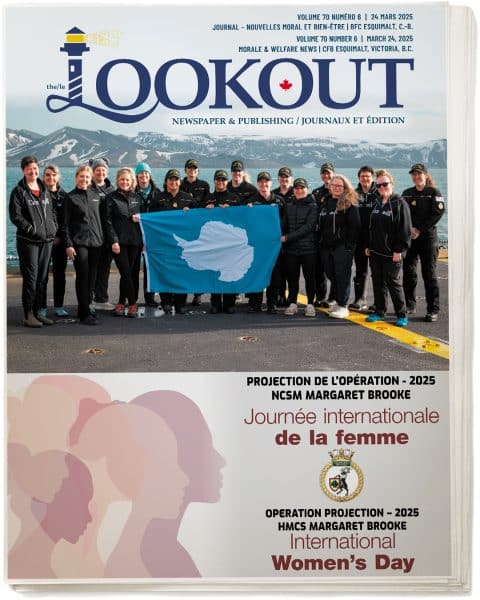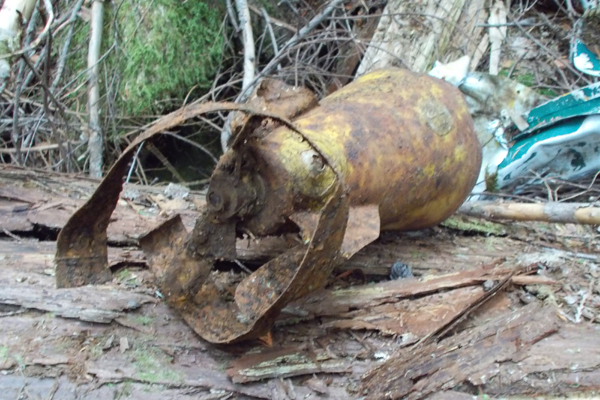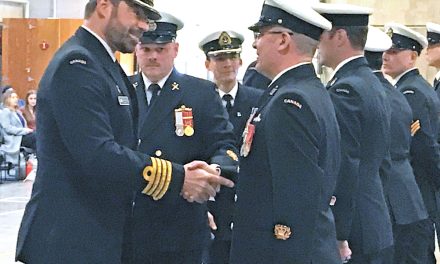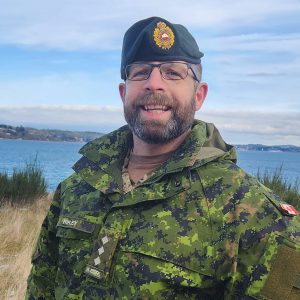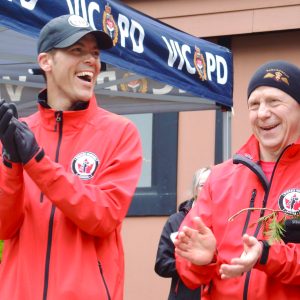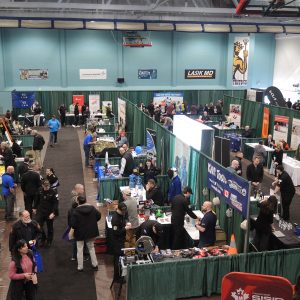Two Explosive Ordnance Disposal (EOD) Technicians from Fleet Diving Unit (Pacific) were called to help solve a 70-year-old mystery late last month.
On Oct. 25, PO2 Shawn Goodine, Maritime Explosive Ordnance Disposal (MEOD) 2 I/C, received a call from the Regional Joint Operations Centre (RJOC), telling him a crashed aircraft, possibly from the Second World War, had been found 10 kilometers northwest of Port Renfrew, B.C.
Employees from Teal Cedar Products Ltd. had stumbled upon the wreckage while surveying an area for potential logging.
“They thought they saw some military ordnance that resembled tail fins from aircraft bombs within the debris,” says PO2 Goodine. “They weren’t really sure so they called the RCMP for assistance.”
The RCMP passed the information on to the PO2 Goodine and early on Oct. 30, MEOD and a member of the RCMP headed to the remote logging area outside Port Renfrew to investigate.
The loggers had already surveyed the area and showed the divers every piece of debris they had found on the roughly 130 by 40 meter crash site.
“They knew where all the pieces were,” says PO2 Goodine. “So it was basically, ‘Shawn we found this, Shawn we found that. This is the landing gear. This is the piece we think belongs to a bomb.’”
As the team worked its way down the mountain slope from the tail section to the cockpit of the plane, they searched for serial numbers and anything else that might help identify the plane, but they found much more.
“We found a couple pairs of boots; we found part of a leather jacket worn by the aircrew, and the old style World War Two leather aviator hat. We didn’t find the goggles but we definitely found the leather hat and it actually still had the ear bud still in for comms,” says PO2 Goodine.
Unfortunately, there were no clues as to the fate of the plane’s crew as there weren’t any human remains with the clothing.
The Casualty Identification Section of the Directorate of History and Heritage has taken an interest in the find; they will be doing their own research to confirm the identification of the plane and what happened to its occupants.
Research done by the loggers along with MEOD’s own sleuthing has led them to the likely make of the aircraft. The colour scheme, shape, construction and a few instrument serial numbers pointed to an Avro Anson possibly the Mark V.
The construction was a particularly helpful clue. It had a combination of metal and wood which was common practice during the Second World War due to a shortage of metal. Canada produced 1,051 of these planes for the British.
On the west coast of Canada, the aircraft was used as a reconnaissance patrol and training platform for pilots.
Further research revealed that an aircraft of that type went missing Oct. 30, 1942, with a crew of five. Since it was never found, it was written off. PO2 Goodine could find no record of fatalities, though he’s doubtful anyone could have survived the crash that resulted in such a mangled scattering of aircraft parts.
The most important discovery for the bomb disposal crew was two tail fin assemblies – the part of a bomb that gives it stability so it falls to earth at the correct orientation.
The 20 lb bombs they once attached to were nowhere to be seen amid the 70 years of forest growth, which had swallowed much of the wreckage, but the presence of its components told PO2 Goodine that it’s highly probable that ordnance could still exist somewhere on the site.
The amount of ordnance is potentially significant, he says.
“Based off of research, we determined that if the particular aircraft that’s out there is identified correctly it possibly could have carried a max payload of 360 lbs, so 8 x 20 lb. bombs and 2 x 100 lb bombs.”
It would be quite the excavation to find out whether the plane was carrying a full payload.
“There’s so much growth just from vegetation on the floor, from fir needles, moss and stuff. We’re talking in some spots a foot to two feet of growth that’s accumulated over the years. So how do you dig through that?”
There are also several tonnes of deadfall – as large as three or four feet in diameter – crushing parts of the fuselage.
It would require a lot more than the three-four hours the divers had to explore the site in further detail. A detailed exploration of the site could also benefit from ground penetrating radar that would allow them to peer through the undergrowth and into the ground to reveal anything matching the size and shape of the potential ordnance.
The decision to do further exploration lies with Unexploded Ordnance Canada, a branch of Defence Construction Canada.
PO2 Goodine has submitted his report and now waits to find out whether the site should be further examined.
In the meantime, PO2 Goodine plans to do a little more digging through the history books to see if he can find any more information about the suspected aircraft and its crew.
Carmel Ecker, Staff Writer
